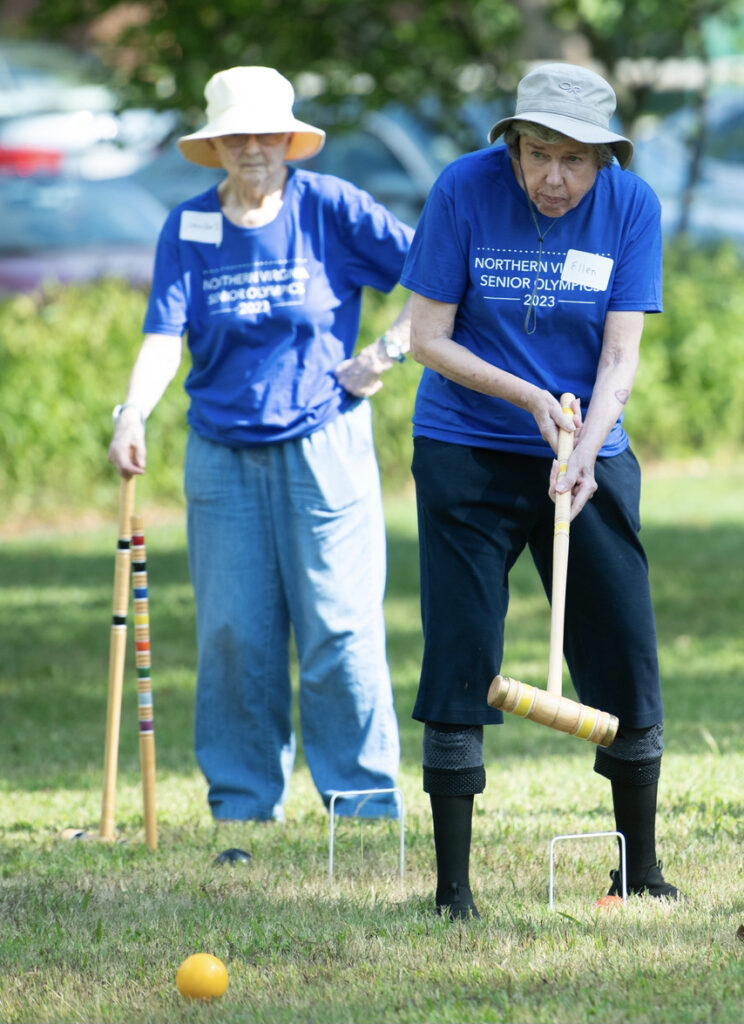
When
Tuesday, September 17, 2024:
- women's - at 10:00am
- men's - at 11:00am
Where
Walter Reed Community Center
2909 16th Street S
Arlington, VA 22204
Event Director
Wayne Southard
Contact Wayne by email.
Volunteers
See our volunteers page for details.
Results and Records
Results and Records for NVSO 2023 Croquet Events - women's and men's.
Photographs
Photographs of the NVSO 2023 Croquet Event taken by Rena Schild.
Rules
General Rules
Please go here for rules covering all NVSO events.
Croquet
For the NVSO's rules regarding Croquet, go to the Index of the General Rules to find the specific page referenced.
